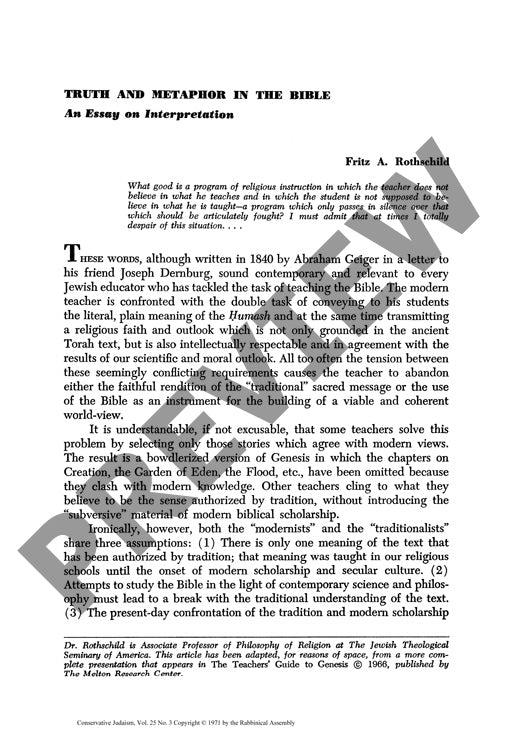Truth and Metaphor in the Bible an Essay
Couldn't load pickup availability
Can ancient religious texts speak meaningfully to modern readers while maintaining their sacred authority? Through a comprehensive analysis of Jewish biblical interpretation spanning two millennia, a pattern emerges of sophisticated hermeneutical approaches that consistently adapted to changing cultural contexts while preserving scriptural relevance. From Philo of Alexandria through medieval philosophers to Kabbalistic literature, Jewish scholars distinguished between literal (peshat) and metaphorical meanings, employing allegorical, philosophical, and mystical interpretations when plain meaning proved inadequate or contradictory to reason. Analysis of major commentators including Philo, rabbinic literature, Rashi, Saadya Gaon, Maimonides, and Zohar authors reveals that metaphorical and mythical language in biblical texts, rather than undermining scriptural authority, often provides the only means of penetrating true meaning, particularly in passages dealing with divine attributes and actions. Contemporary biblical scholarship using modern linguistic analysis, comparative religion, and historical-critical methods represents a continuation of this traditional interpretive practice rather than a break from it. This approach validates the use of contemporary conceptual tools in biblical interpretation while maintaining the text's sacred character and relevance for modern readers. The research contributes to understanding how religious texts can maintain both historical integrity and contemporary significance through sophisticated hermeneutical approaches.

More Information
-
Physical Description
-
Publication Information
Published 1971
ISBN
-
Publication Credits
Fritz Rothschild

